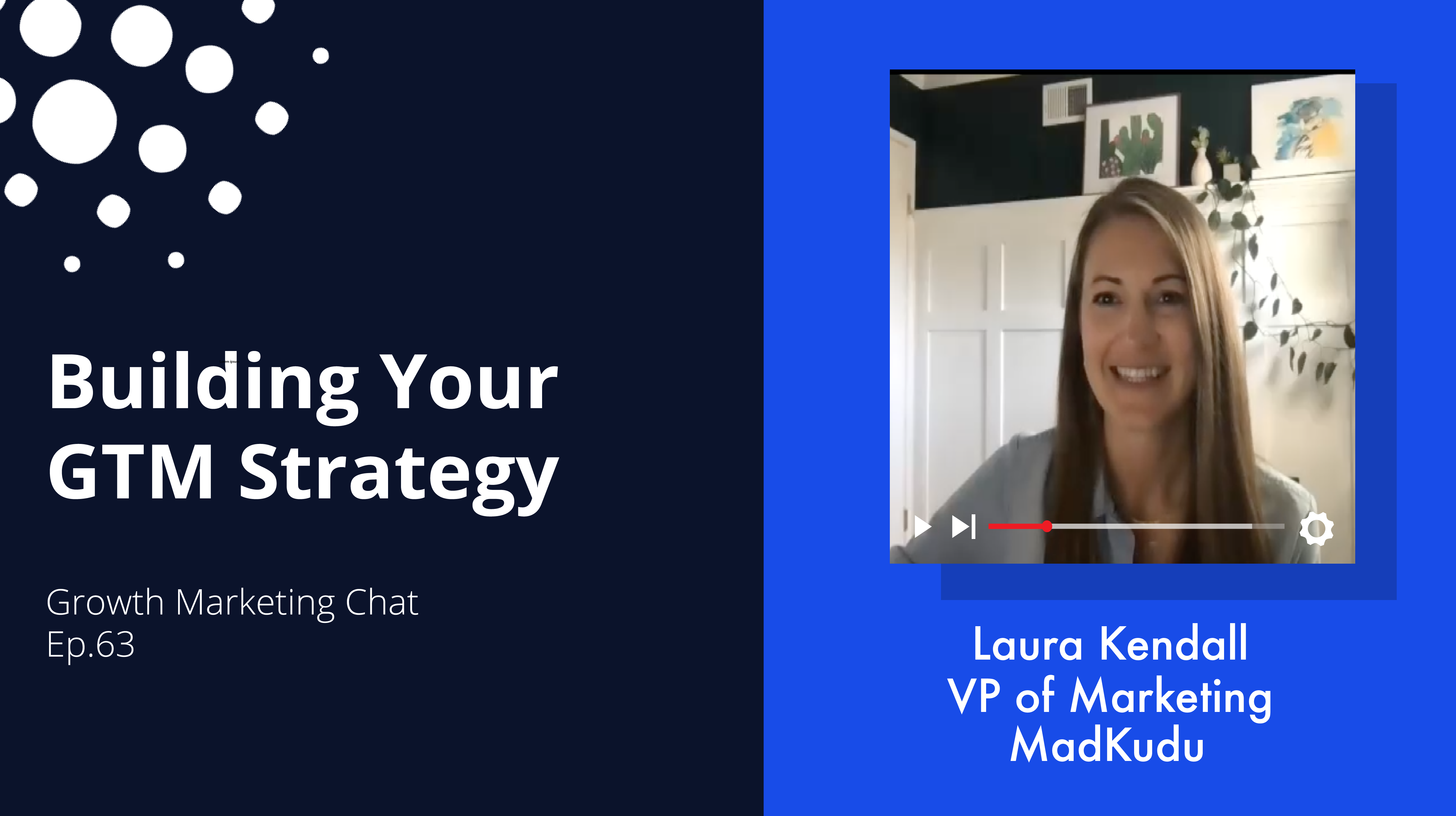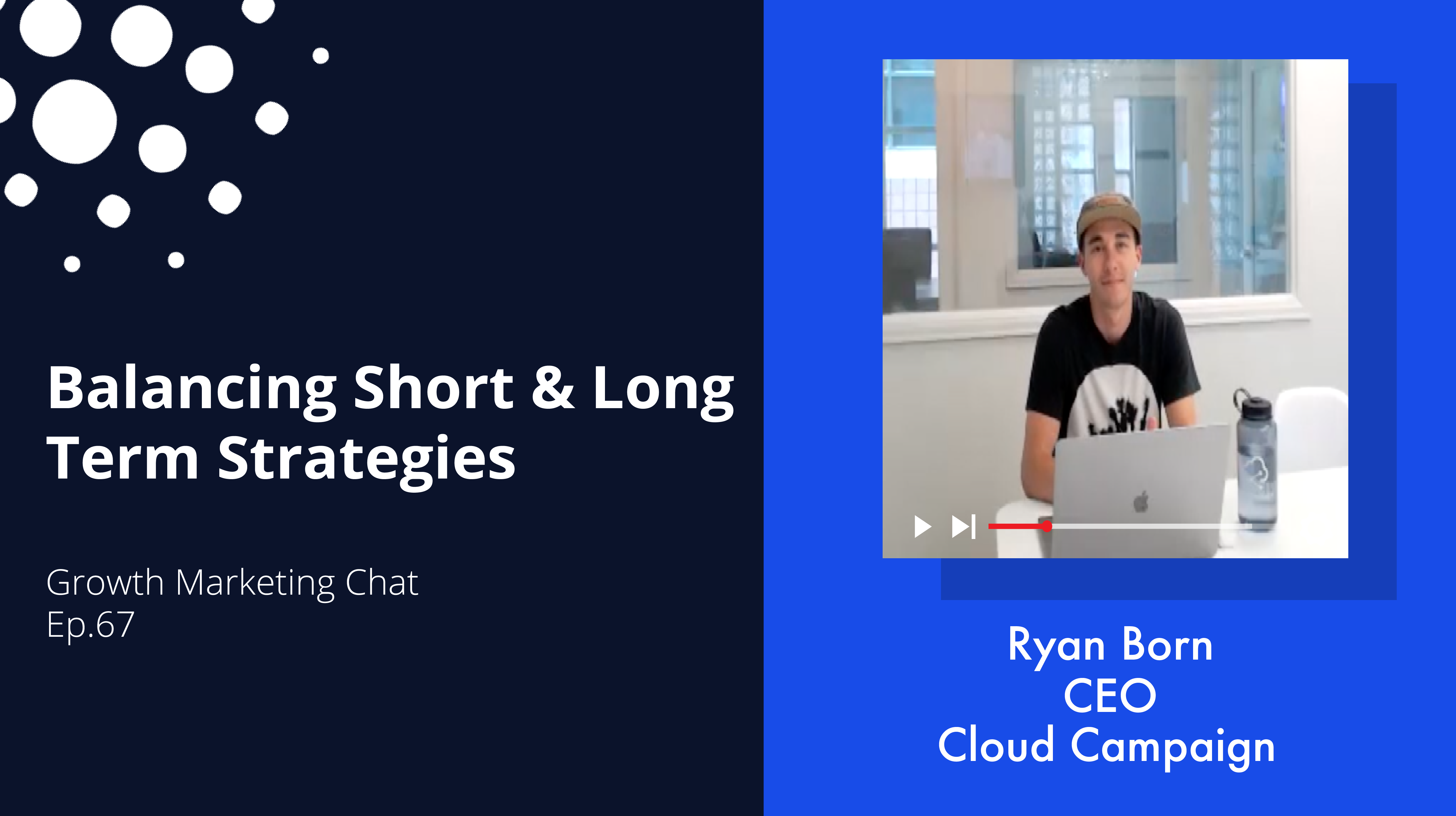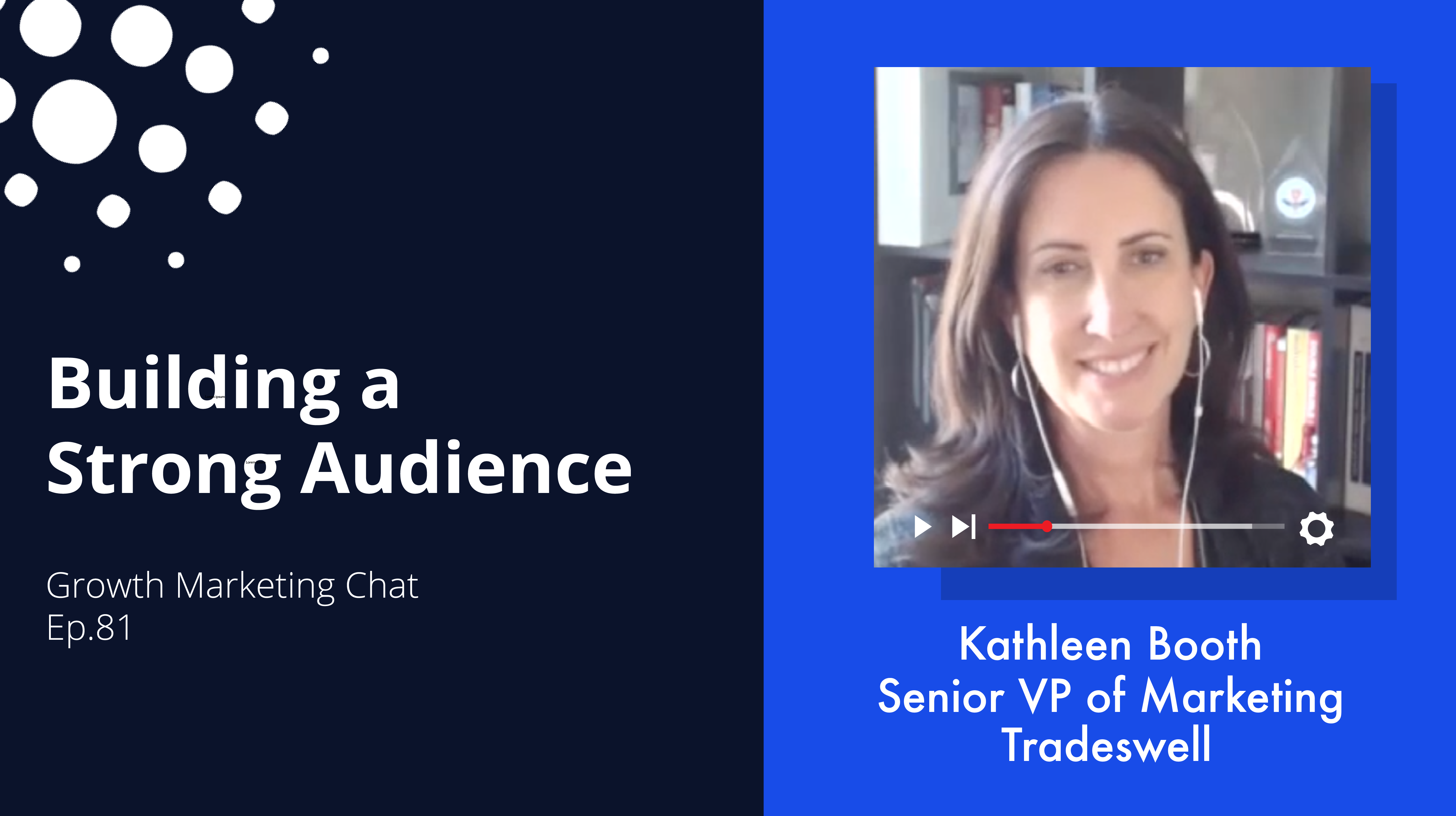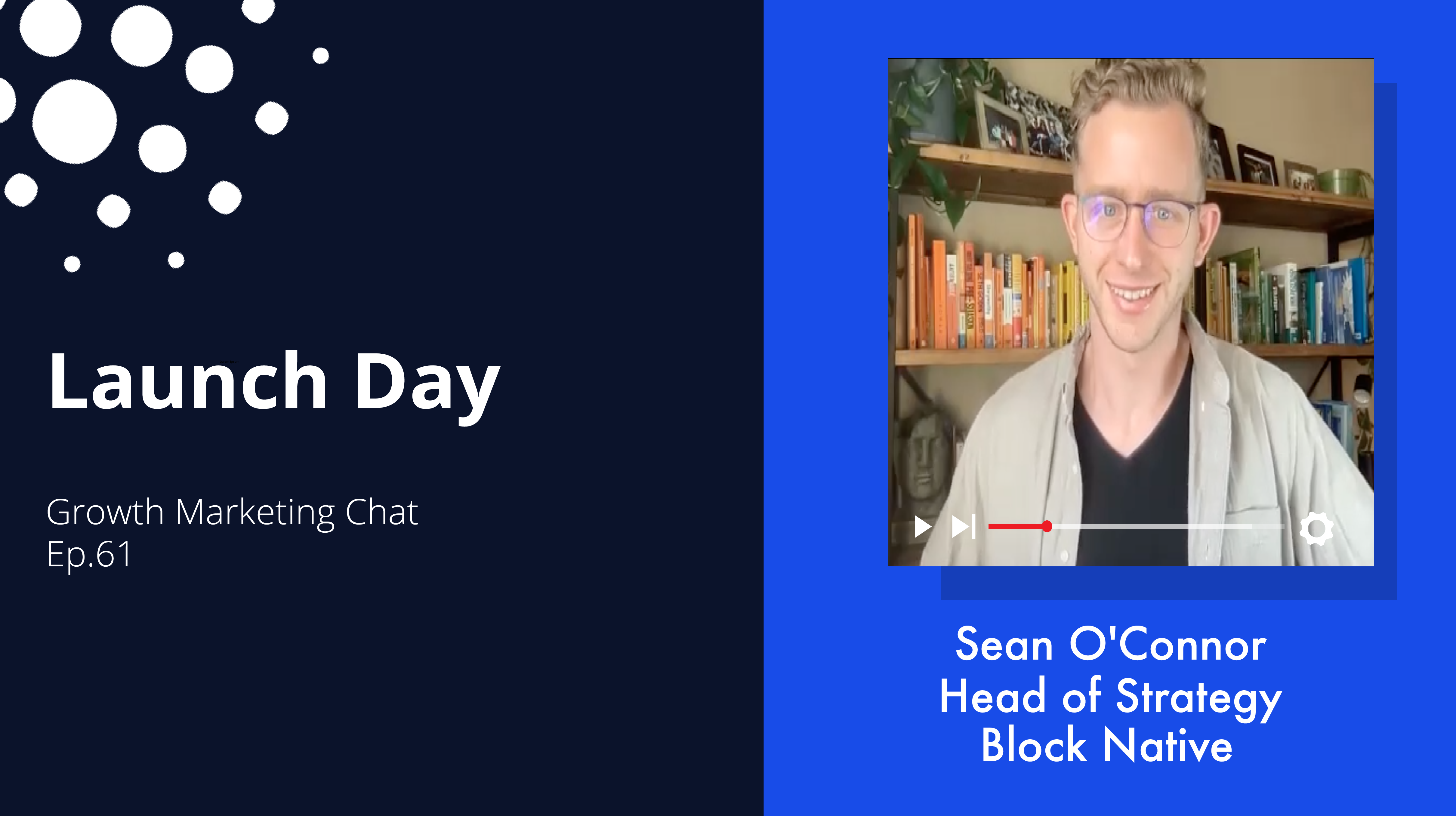“I need you to get me more leads.”
Our instinct as marketers is to immediately say, “Okay, I’m on it,” and get to work implementing demand gen strategies we think have a decent shot of generating qualified leads. This is especially true when marketing leaders are entering a new company.
But, what if we told you it’s not always in your best interest to respond this way? Scott Todaro, CMO at Plannuh, has some advice that may go against our gut to immediately agree to generate more leads.
Marketing's Role in Business Strategy
In this video, Scott breaks down the role of marketing in an overall business strategy, specifically how new CMOs can come in and help revolutionize their company by simply understanding the business, its product and its objectives.
He reviews:
- The importance of comprehending your business model and how marketing will drive this forward
- Assessing previous and existing strategies, positioning, pricing, messaging, etc. to determine where there’s room for experiments and improvement
- Setting clear expectations for your executive team
Tune in now to glean all of Scott’s outstanding advice, applicable to all marketers (not just new CMOs).
Video Transcript:
CAROLINE: Hi, welcome to Growth Marketing Chat. Today I am here with Scott Todaro. Scott is a marketing leader. He’s also a sales leader. He’s been leading marketing and sales for multiple SaaS companies. Today he’s the CMO at Plannuh. He also is a published author of “The Next CMO.” Scott, thank you so much for being with me today.
SCOTT: Thank you, Caroline. This is great, thanks for having me.
CAROLINE: Yeah, so I’m really excited about our chat today because we’re gonna talk about the role of marketing, especially in the growth stage and how marketing can be part of strategic business discussions and how should marketers really think about business strategy.
SCOTT: Yeah, you know, it’s interesting. Business strategy should dovetail pretty closely to marketing strategy. And I think over time marketers have focused really on promotion as opposed to focusing on a lot of the other areas that are typically associated with marketing.
And I think we all grew up and we heard the four Ps of marketing, and we had our price, our promotion, our place and all that other wonderful stuff, product. And if you really look at it today, marketers are only doing one of the four Ps. And that’s kind of a problem because if you really think about marketing, marketing is one of the most strategic pieces of the business. You’re actually looking at the target audience, understanding what their needs are, bringing that back to help shape the product. You’re understanding what is the market dynamics out there? What are your competitors doing? What are industry luminaries saying? You’re understanding partnerships and other distribution channels that potentially could dovetail in there. And that’s all part of your overarching strategies.
So, if you’re just looking at how do we generate more leads on this week or this quarter or this month, then you’re kinda missing the top line strategic understanding of the business. And so, I think what happens today when you start to think about business strategy, you start thinking about, well what’s the most important thing in business? The most important thing is that you sell a product. That’s why it’s called business. And if you can’t sell a product, you’re going to go out of business so there will be no business.
And then on the flip side, you need something to sell, whether it’s a product or a service. So, if you have those two basic premises that I make a product and I can sell a product, then I’m in good shape. Well, the problem is that marketing has a role in both of these key elements and that marketing is not filling today. So, in order to be able to sell it, you need to understand who’s gonna buy it, you need to understand why they’re going to buy it. So, what’s the need that they have? You’ve got to understand how to position your product so they can buy it. You got to understand what the benefits are so they can see why they should use it. And you got to make it sound different than everything else out there on the planet so that you can cut through the clutter because there’s lots of noise. Then you’ve got to figure out, next, okay, well, now that I got this, I got this audience, what are they willing to pay? How do I package that up so that it makes it easy for them to consume the product or the service or other things along those lines.
Then I got to look at, okay, well how am I going to distribute this? Like what’s the best way to do it. Should I sell this direct? Should I sell it indirect? Should I have a mixed model on how I’m doing it? And then you’re starting to look at, okay, well now how do I promote it? And so, where are the people, how do I build campaigns? And then I look at my channels and the problem is that everything that I just talked about, the channels are the last piece. So, the last decision piece, because that’s your execution, that’s your way, your vehicle for talking to the audience with the message, with the product, with the pricing and how are you gonna distribute. All those things are done first before you get to that final piece.
And in fact, if you’re not looking at those top line, what we call now business strategy, what used to be marketing strategy, if we’re not looking at those pieces of it then it makes it really hard to promote properly. Because if I don’t understand where my price point is and I don’t understand my audience and I don’t understand how to package this properly, now how am I gonna communicate that properly? And so, this is where I think marketers have lost their way over time.
They come into a company ahead of marketing and the first thing is that everybody says, “We need leads” and the next thing they are like, “Ah I have to create leads.” And they’re there running around. and they’re trying to send out this campaign and that campaign and they’re starting with their channels because that’s the fastest way. Like let’s set up some ads on LinkedIn and see if we can… What are you doing? Stop.
If I can give you any advice to CMOs, when I have been most successful, people come in and say, “I need a whole bunch of leads.” And I say, “I’m not gonna give you one.” Not one lead until we fully understand what this business model is and how marketing is going to help drive that business model, that’s where you start. And then once you’ve identified all those other things, the lead generation piece gets really easy. It gets really, really easy because you know who you’re targeting, what you’re gonna say to them. And you know what price point and other things along those lines, and everything falls into place for you. But if you don’t do that upfront strategic work, you’re gonna find yourself really kind of thrashing, trying to find a market, testing way too many things, instead of having a clear vision of what to deliver.
CAROLINE: And also, not necessarily testing the right things. For example, pricing, you might want to test your pricing and see, well, maybe I can raise my prices, sell as much product, and hit my results. We actually did this a couple of months ago. We’re selling the same amount of product, we’re making more money, with one of our clients, because the value was there. But if you cannot test this then yeah, like you said, you’re looking at the bottom of the problem, just the channels and you can’t really impact the business in the long run.
SCOTT: That’s exactly it. In fact, I worked for a company that was literally selling a product. It costs hundreds of dollars a month and then overnight they raised the price to a hundred thousand dollars. So same product, all they do is they re-changed the name of the product, re-packaged it and lo and behold, they were able to sell it for a hundred thousand dollars. So that the same thing that somebody else if they just bought it three months earlier, could have gotten for a hundred and sixty dollars a month. Now it became really expensive. And there’s a perception associated with it.
So, if you’re going after big companies and you’re selling something for hundreds of dollars, they don’t see any value in it. All of a sudden it aligns with the other products that they’re buying, and it positions in their head that this is for me. And it also gets rid of all of the small… Conversely, if you’re gonna price it at a hundred thousand dollars, a smaller company is gonna buy it. And so that’s part of your messaging strategy. Some companies will put their pricing up on their websites. Some companies won’t. You don’t put your pricing up, there is the perception that it’s really expensive.
And so, all of these things come into the psychology of understanding how best to message your business to your audience. And like I said, all of that comes with really laying out the foundation at the beginning of setting goals, building strategies off the goals, and then looking at what are those business elements, your channels, your pricing, your packaging, and then figuring out what is your campaign strategy for your promotion. It all fits in together. It’s all interrelated and integrated. And if you start at the lowest level, like I said, you’re gonna miss the boat.
CAROLINE: Right, absolutely. So, one last question for you is that a lot of the time marketers might want to go and look at all of these things but as you said, you start as a CMO, the first thing you’re gonna be asked is, “Where are my leads? I need more leads.” How do you deal with this? What would be your advice for CMOs that are starting today?
SCOTT: I would set the expectation upfront that you’re going to do an audit of the business. And so, what is this? What’s this audit thing. And it’s like, basically what you wanna do is sit down and say, I wanna take the first 30 to 60 days. And I wanna talk to some customers. I wanna talk to some partners. I wanna review our business processes. I wanna talk to the head of sales. I wanna find out about services or other things that may be added on to your product. I wanna get as much information as I possibly can. I wanna talk to some industry analysts potentially, or if you want, looking at other services out there that do analysis. Pull all that information in and start to digest it.
I always find that it’s really good to help coalesce the messaging by starting with a positioning exercise. And you can invite all the other executives into that positioning exercise and drive them through the process of understanding the who you’re selling to, what’s the need, how are you defining your product, the benefits, and the differentiation. And once everybody on the executive team’s in agreement, then they’re all gonna jello around everything you do, because you’ll be able to continually point back to that positioning statement that’s structuring the rest of your marketing plan.
But if you don’t do those baseline analysis then you’re gonna find yourself on the other side, just really kind of guessing with a lot of stuff. And you’re gonna look… The only place you’re gonna be able to find stuff is to look at who was doing this before. And obviously if the people were doing it before, you’re replacing them, they didn’t do it right because otherwise they’d still be there because they didn’t, now you’re gonna follow the data that they’ve provided for you? I think that’s a recipe for failure.
And I think if you have a CEO that understands the business, then they’re going to want to give you that flexibility so that you can pull in the information you need to make better decisions. But if you just start jumping in because of the pressure, you’ve got to have the intestinal fortitude to push back. You have to say, “No, I can guarantee you I will fail if you force me into this corner because I don’t know enough to implement change here. I need more information.” And unless that’s readily available, which most companies it is not, you’re going to have to do that audit to pull that information in, look at it all, digest it, and then figure out how you’re gonna make decisions off of it. They’re gonna be different than the mistakes that have been made in the past.
CAROLINE: Right, and I think something I really appreciate in your advice is also that if you include the executive team as you’re going through the messaging statement exercise, then you can also get real buy-in, at the top level. So, as you said, everything else relates back to it. So that’s definitely really, really good advice.
SCOTT: Yeah, no, it’s no doubt. I mean, look, any CMOs out there that does not have product marketing, go get it. And when you get the product marketing team, make sure that you get access to pricing and packaging, also make sure that that product marketing person is a liaison to the product team so that you can help shape product as well. And it’s really that simple. Just start inserting yourself into these processes until people sit there and say, well all right, well just give it to you. You seem so interested in it, just have it. Before you know it, your sphere of influence will start to grow, you’ll start being seen as a strategic asset, for moving from the executive table at the back of it, to the front of it and people coming to you to ask for advice.
Also get to know the customers. it’s always a big mistake when marketing people sit in their ivory tower and don’t actually speak to customers. I think is important you get out on sales calls, you interview customers and prospects to get that feel of what they want and start to aggregate that data, meeting with several of them to try to find out what that commonality is, is the reason why people buying and getting benefit from the products.
CAROLINE: Absolutely. Alright, Scott, thank you so much. Yeah, thank you for joining us.
SCOTT: Caroline, always a pleasure. Great talking to you.





